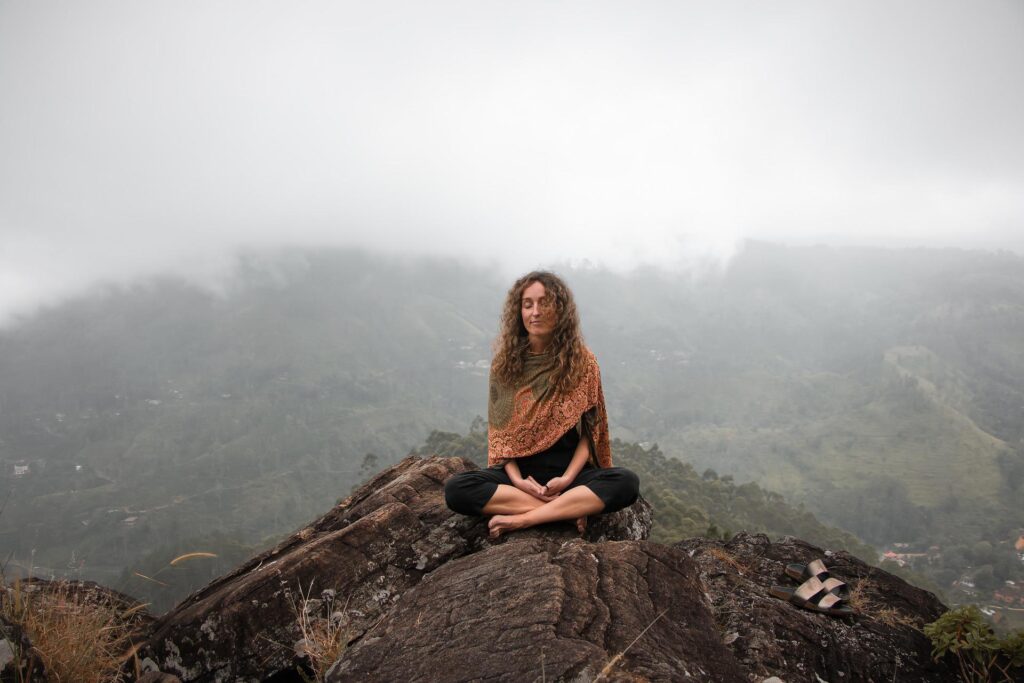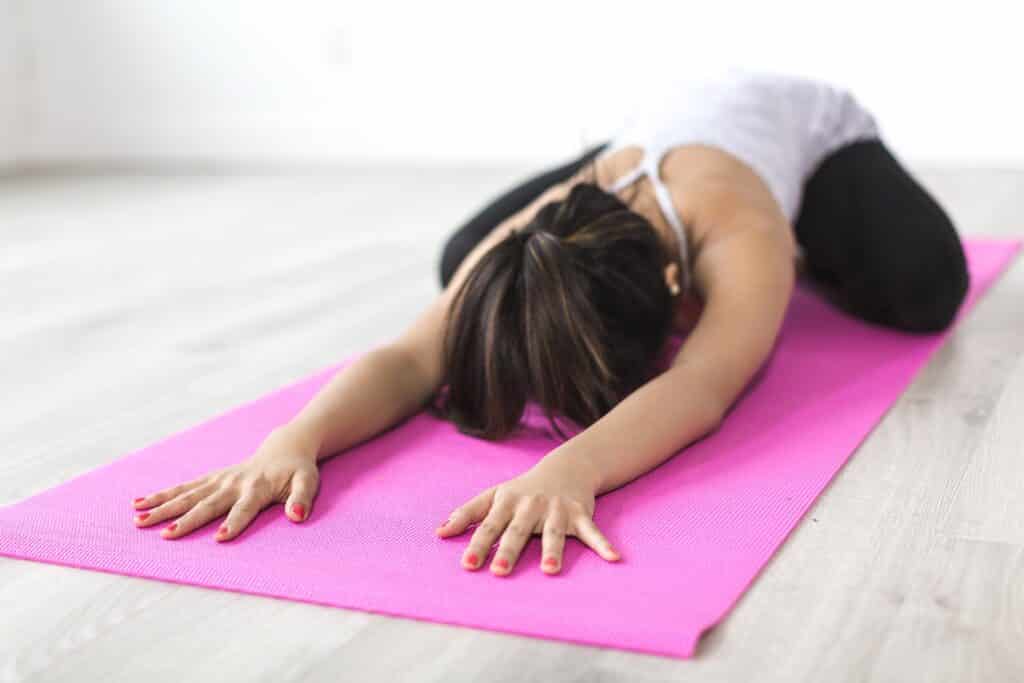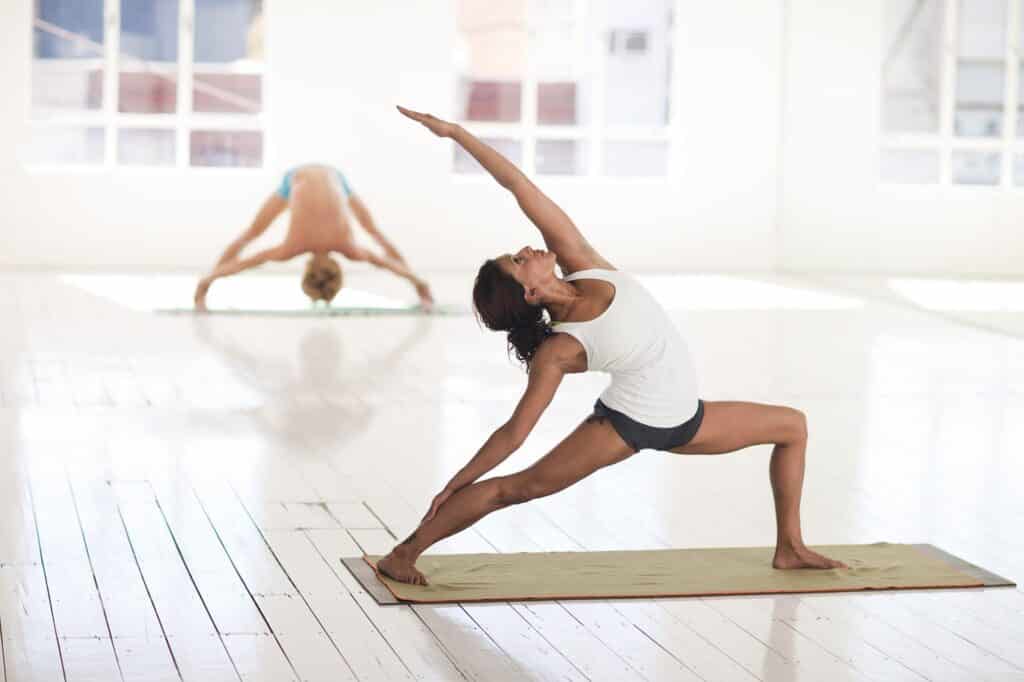How Yoga is an Active Form of Journaling
This amazing guest post comes courtesy of the wonderful Katie from Soulprimacy.com, a website that provides journaling guides, shares valuable information on healing, and promotes self-awareness.
A yogi’s space typically consists of their favorite mat, two foam blocks, and room for physical and mental expansion.
A journalist’s space might include their favorite pen, a sleeping cat nearby, and a lavender candle wafting throughout the room.
Typically performed on their own and requiring undivided attention, yoga and journaling actually have more in common than meets the eye.
Both self-care practices require a certain amount of focus and introspection from their practitioners. Both practices can be relaxing and yet challenging. And both scratch an itch that every human has; a deep desire to connect to their truest inner self.

Given their similarities, it’s interesting when you see that yoga is simply an active form of journaling.
The more they can become entangled, the more potent their effects can be. But exactly how are they so much alike?
How Are Yoga and Journaling Alike?
Everyone approaches their yoga mat with similar intentions, whether or not they know it.
No matter their experience level, a yoga practitioner is seeking a fusion of mind and body. Yoga literally means to “yoke” or to unite “individual consciousness with that of the universal consciousness.”
Just as often, it’s seen as a unification of body and mind. Practitioners are looking for control over the fluctuations of their mind. They hope to feel transformed post-practice, like a different person than they were before they stepped onto the mat.
Journaling stokes a similar emotional fire.
Avid journalists see an emotional workshop at the ready when they stare upon a blank page.

Journaling peers inside the soul, the inner workings of our human experience, and into deep-seated consciousness.
Whether the written contemplation has a positive or negative tint to it, journaling allows the writer to work through something. To lessen their pain, or to elevate their delight. To bring something to the surface, or to lay their troubles to rest.
One could still argue that yoga places more emphasis on the physical, whereas journaling seems to highlight the mental.
That being said, what about seeing what both rituals powerfully achieve?
Yoga and journaling both possess a mental, physical, and spiritual element. This trinity is at the root of self-care; what yogic sages have encouraged humans to “yoke” for thousands of years.
Svadhyaya, the Sanskrit Term Meaning “Study of the Self”
In Hinduism, there is a Sanskrit term known as svadhyaya, which translates to English as “study of the self.”
When a yogi is cultivating svadhyaya, they are essentially exercising sacred self-reflection. With utmost honesty and curiosity, an individual looks deeply at their internal and external landscape.
During this process, they ask themselves in what way could their life be improved? In what way could their experience of “self” be bolstered or shifted towards the light where better lives?
With this term now in the field of understanding, it’s likely yogic sages would say journaling is an avenue for svadhyaya.
Being that svadhyaya is an important element to yogic philosophy, perhaps performing svadhyaya on the mat does not differ from performing svadhyaya with the pen.

Creating A Simultaneous Yoga and Journal Practice
In a modern world packed full of hustle and very little personal time, it’s an enticing prospect to think a simultaneous yoga and journaling practice could pack such a productive self-care punch. After all, both routines ask the same thing of their practitioners; curiosity, introspection, and a fusing of both body and mind.
Even if worked separately, both practices produce similar emotional and spiritual results.
If you’d like to test out yoga as a physical journaling practice, the setup process is simple:
Fold your yoga blanket and have it lying at the back of your mat.
Next, your strap and yoga blocks can live on either side of your mat.
And finally, your journal and favorite pen can wait for your incoming thoughts at the top of the mat. (A paperweight might be handy, depending on your journal’s binding.)

As you flow through your yoga sequence, it’s inevitable that the mind will become consumed with thought. Sometimes, these thoughts are desirable and fit the mood of the class. Other times, and more often than yogis like to admit, the thoughts can take on a more negative or challenging deposition. Especially when a pose is challenging, we come out of it early due to difficulty, or we fall out of it completely.
When such scenarios take place during your yoga practice, they create the perfect journaling opportunity.
Write exactly what comes up emotionally.
Did you react to your performance with self-judgment, cruelty, or annoyance? Conversely, were you able to maintain a state of calmness, non-judgment, and simply find the pose again?
Yoga is an expert at provoking judgment, be it good or bad.
At any opportunity you find, take a moment to pause your practice in order to jot down your thoughts and emotions.
When your yoga flow has reached its end, look at what you’ve written. With what made its way to the paper during your practice, see if you can dive even deeper into thought. Perhaps you’ll come to find some evolutions of thought you wouldn’t have otherwise!
With time and proper intention, this dual practice will become more natural and before you know it, you are killing two self-care birds with one stone.
“Yoga begins with listening. When we listen, we are giving space to what is.” — Richard Freeman

